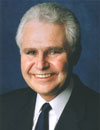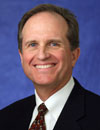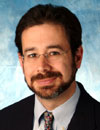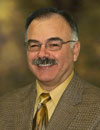Federal and State Transmission Planning
November 10, 2009
10:00 a.m. Central Standard Time
Schedule this Webinar with your team – No Travel Required!
$189 per site location!
| • Speakers |
| • How Does It Work? |
| • What Equipment Do I Need? |
| • Questions? |
Critical electric transmission siting decisions have traditionally resided exclusively in the states, but the needs of regional electricity markets and national energy policy are encroaching on responsibilities jealously guarded by states. The Obama administration, Congress, and FERC have all sought to advance an interstate, rather than intrastate, perspective on needed transmission, but local interests in siting are strong. What issues do states face in siting decisions, and would a Federal approach address them? Can individual states properly consider national energy policy interests in their siting decisions? Who benefits from, and who pays for, new transmission facilities?
Discussion Topics Include: |
Different RES provisions have been approved in 2009 by the House of Representatives and the Senate Energy Committee. The House bill requires 20% renewable electricity by 2020. Senate Energy has proposed a 15% renewables target by 2021. Some of the issues we will address in this discussion include:
- The likelihood of a federal RES becoming law and when.
- The prospect of RES as part of climate cap and trade or a narrower energy bill.
- Discussion of annual renewable percentage requirements.
- The range of technologies that will be eligible for RPS credit.
- How federal RES’s interact with state RES’s already in place.
- The need to address existing state and regional differences.
- How national standards affect the "politics" of criteria for renewable standards.
- Ultimately, how much the RPS renewable percentage requirements will be a change from the status quo.
Hear from these experts: |
You and your entire team can take part in this unique conference brought to you by POWER magazine and Davis Wright Tremaine’s Energy Practice.
You can view it at your desk or gather around a speakerphone in a conference room – no travel required! Each registration comes with access to the archived version of the program and the materials for six months.
Don’t miss this exclusive Webinar on November 10, 2009. Register you and your team today!
How does the Webinar work? |
It’s easy and convenient! You just need RealPlayer or Windows Media Player installed on your computer. If you do not have either, please follow the instructions below to download and install them. Or if you prefer, a phone for the audio and an Internet connection to let you watch the slides and other information on the Web will suffice. No other downloads or special hardware – a dial-up connection will work fine.
- One (1) set of materials (you may make copies for all of the persons you invited to listen to the program);
- One (1) toll-free connection to the seminar (if you select the audio connection), and
- One (1) Internet connection to the seminar.
- Use speakers on your computer or speakerphone on your telephone and invite your entire staff to attend for FREE!
What equipment do I need? |
For the audio connection:
- A computer with RealPlayer or Windows Media Player installed. When you log into the Virtual Seminar, your computer will be taken through a brief configuration check and will let you know if you’re missing any software.
- If you do not have RealPlayer or Windows, a touch-tone telephone will work also. It works best to use a speakerphone so that others can listen too.
For the Internet connection:
- PC: 166Mhz Pentium-based PC or better
- Operating system: Windows 95, 98, NT, 2000, XP
- Browser: For optimal viewing experience, we recommend using Internet Explorer 6.0 or higher. However, any version of IE 4.0 or higher will work. For Netscape, only versions 4.x are supported at this time.
- Internet connection: 28.8 or faster connection
- Display set at 1024 x 768 or 800 x 600
Player Downloads
- If using Microsoft Windows Media Player, Version 6.4 or later is required.
Download a supported Microsoft Windows Media Player - If using RealPlayer, Version 7.0 or later is required.
- Download a supported RealPlayer
If you are having any technical difficulties or need assistance meeting these requirements, please contact our Technical Support Center at 866-709-8255 or click here.
Questions? |
If you are having any technical difficulties or need assistance meeting these requirements, please contact our Technical Support Center at 866-709-8255 or click here. For content questions regarding this Webinar, contact Brian Nessen at BNessen@powermag.com.




